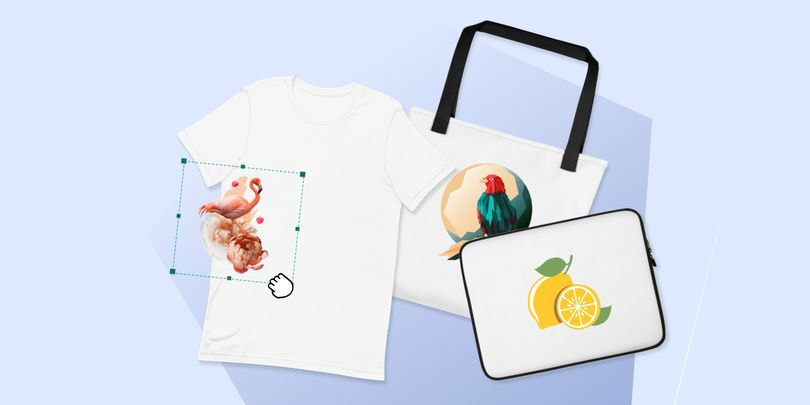Set your DTG designs up for success

Save the file as a PNG
When creating your own file in software like Adobe Photoshop, we suggest using a transparent background and saving your file as a PNG file. JPG files don't support transparent backgrounds, which means your design might be printed with a white background, diminishing the quality of your design. Before uploading any design files to Printful, we recommend checking its transparency in your graphic editor and reading our transparency guide.

Choose the right color space
Create your print file in the sRGB color profile, specifically sRGB IEC61966-2.1. This is the format our system reads when it receives your file. Our printers then convert your submitted file into CMYK format. CMYK stands for cyan, magenta, yellow, and key (or black). Sometimes converting from sRGB to CMYK slightly changes colors, but using the sRGB IEC61966-2.1 will ensure the best possible accuracy.

Use the right DPI
DPI (dots per inch) refers to the number of printed dots within one inch of an image printed by a printer. This is different from pixels per inch, or PPI, which refers to the number of pixels contained within one inch of an image on a computer monitor.
The more dots per printed inch, the higher the print quality (and the more sharpness and detail). Using the correct DPI ensures fast processing and accurate prints, so be sure to check file guidelines when choosing your products. For most Printful products, your print file has to be at least 150 DPI to ensure optimal print quality. Other Printful products, like phone cases and stickers, require 300 DPI. It’s also best not to exceed 300 DPI.

Keep the DPI high when changing file size
The actual size of your file is its measurement in inches. Let’s say it’s 5 inches by 5 inches with 100 DPI. If you double the size to 10 inches by 10 inches, the DPI is cut in half to 50. Be careful not to decrease DPI when changing the actual size of your design file.

Consider ribbing, seams, and stitching
Flat surfaces are the easiest to print on. If you choose a product like a sweatshirt or hoodie with seams, pockets, and zippers, you should consider these elements during your design process.
Ribbed garments are printed unstretched, which means the ink only sets on top of the ribs. When worn, the print can stretch and reveal these gaps. This is something we suggest considering when preparing your designs.
Not all fabrics are created equal
100% cotton vs blends

Print outcomes vary depending on the fabric you choose. We offer:
- 100% cotton blends,
- Poly blends (50% cotton, 50% polyester)
- Tri-blends (50% polyester, 25% cotton, 25% rayon or 50% polyester, 37% ring-spun combed cotton, 13% rayon).
Our standard printing process works best with 100% cotton products. If you’re looking for the most opaque result, 100% cotton is your best bet. This fabric has a better result due to its tight weave. However, if cotton is too thick, it can absorb the ink and the design may look more faded.

Designs printed on blended garments will have a faded/vintage outcome with DTG printing due to their looser weave and combination of fabrics. The fabric of the garment will often show through the ink.
Closeup photographs of white printed on different garments
Get a beautiful print result
Your printed design will never exactly match what you see on your screen, but if you’re careful and take our advice, you can get a result you and your customers love!

Follow the guidelines
Always check the file guidelines and tips for each product you decide to print on. Make it a regular part of your design process. Most DTG items have similar requirements, but different template sizes. You can find the File guidelines tab under each product in its product catalog page.

Make a sample order
To see what your final product will look like before you offer it to your customers, we strongly suggest placing a personal order for the product. That way you can hold the item in your hands, inspect the quality, and see if the outcome matches your expectations. You can purchase sample orders with a 20% discount.
Spring and summer fashion trends
DTG printing FAQ
Direct-to-garment (DTG) printing is a printing method that uses ink to print directly onto the fabric or item of your choice. The ink goes straight into the fibers of the fabric, so you don’t feel the design or ink when you touch it.
We use DTG to print your products on demand because there’s almost no setup time, which means we can print the designs quickly and send them your way as soon as possible.
For our DTG prints, we use Kornit machines and inks. Kornit uses high-quality, water-based vegan and cruelty-free inks that they formulate, test, and produce in their own factories. To learn more about Kornit, check out our article on DTG Printing Process Breakdown with Kornit.










